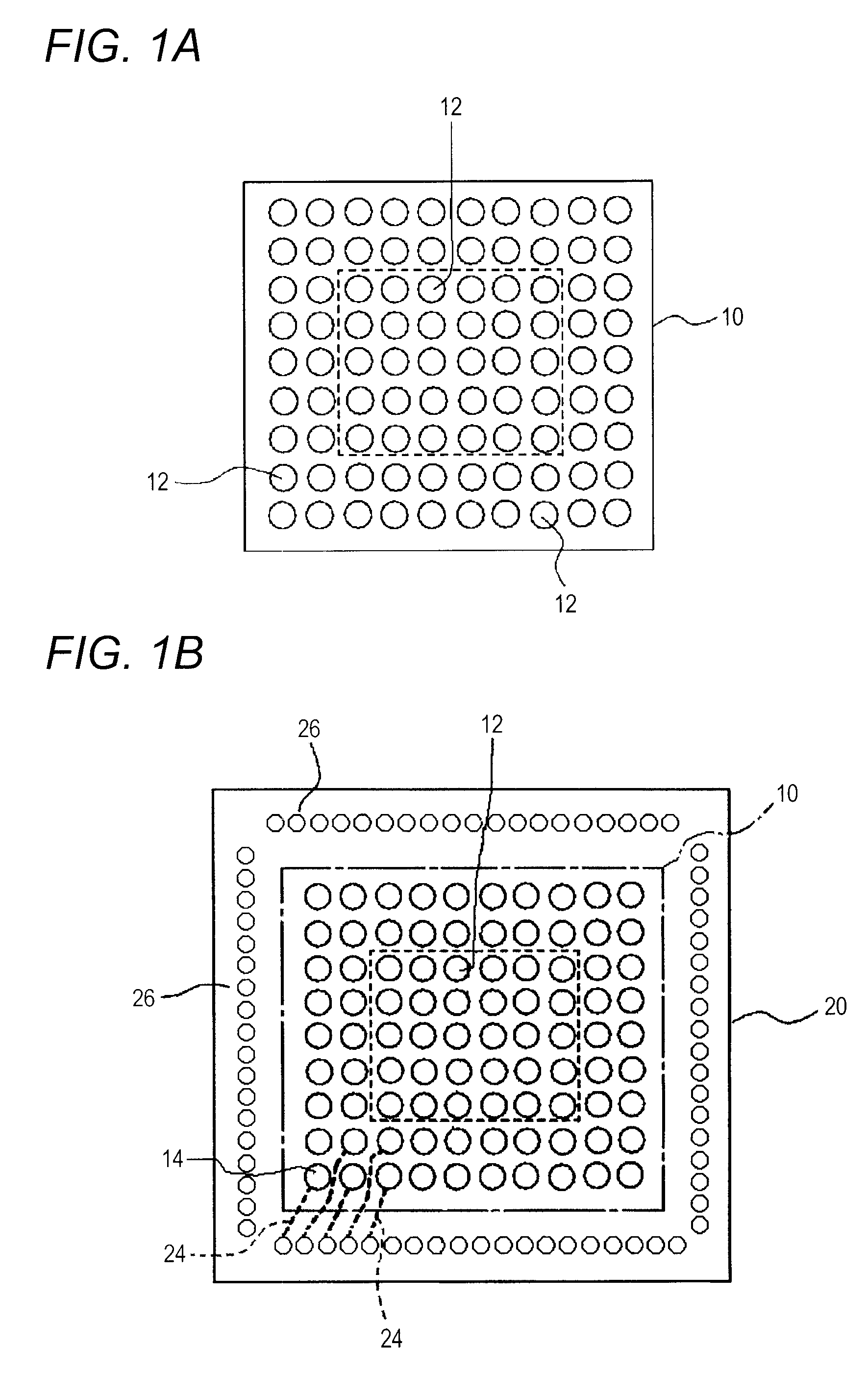Wiring board, semiconductor device and semiconductor element
a technology of wiring patterns and semiconductor elements, applied in the field of wiring patterns, can solve the problems of difficult to satisfy this requirement, limited number of wiring patterns capable of being formed between the loading pads, and the semiconductor device, and achieve the effect of preventing voltage changes and easy charging
- Summary
- Abstract
- Description
- Claims
- Application Information
AI Technical Summary
Benefits of technology
Problems solved by technology
Method used
Image
Examples
Embodiment Construction
[0061]An example of a semiconductor element to be loaded on a wiring board according to this invention is shown in FIG. 1A. In the semiconductor element 10 shown in FIG. 1A, electrode terminals 12, 12, . . . are formed on the entire surface of its one side. Of these electrode terminals 12, 12, . . . , the electrode terminals 12, 12 formed in the central region encircled by a dotted line and its vicinity are mainly those for power supply and for grounding.
[0062]Further, the electrode terminals 12, formed in two rows on the edge side of the semiconductor element 10 (outside the dotted line) are mainly those for signals.
[0063]The wiring board 20 shown in FIG. 1B on which the above semiconductor element 10 is loaded is formed of a resin board of a single layer. A semiconductor element loading face is formed on the one side of the wiring board 20, and as seen form FIG. 1B, it has a wider area than that of the semiconductor element 10. On the semiconductor element loading face, formed are...
PUM
 Login to View More
Login to View More Abstract
Description
Claims
Application Information
 Login to View More
Login to View More - R&D
- Intellectual Property
- Life Sciences
- Materials
- Tech Scout
- Unparalleled Data Quality
- Higher Quality Content
- 60% Fewer Hallucinations
Browse by: Latest US Patents, China's latest patents, Technical Efficacy Thesaurus, Application Domain, Technology Topic, Popular Technical Reports.
© 2025 PatSnap. All rights reserved.Legal|Privacy policy|Modern Slavery Act Transparency Statement|Sitemap|About US| Contact US: help@patsnap.com



